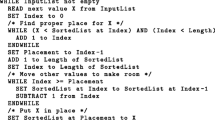Abstract
We can never emulate their meekness,
soft servants of durable material:
they live without pretension
in complicated relays and electrical circuits.
Speed, docility are their strength.
One asks: “What is 2 × 2?”—“Are you a machine?”
They answer or
refuse to answer, depending on what you demand.
There are, however, other machines as well,
more abstract automatons, bolder and more
inaccessible,
which eat their tape in mathematical formulae.
They imitate in language. In infinite
loops, farther and farther back in their retreat
towards more subtle
algorithms, more recursive functions.
They are logical and describe themselves.
As when a man with a hand-mirror pressed against his nose
in front of a mirror
sees in infinite rows the same image multiplied
in a shrinking, darkening corridor of glass.
It is a Gödel theorem as good as any. He sees infinity,
but what he does not see is his face.
(From Göran Printz-Påhlson´s poem “The Turing Machine” published in Säg minns du skeppet Refanut? Samlade dikter 1950–1983 (1984) Bonniers, Stockholm).
Similar content being viewed by others
Explore related subjects
Discover the latest articles, news and stories from top researchers in related subjects.Author information
Authors and Affiliations
Corresponding author
Rights and permissions
About this article
Cite this article
Granström, H., Göranzon, B. Turing’s man: a dialogue. AI & Soc 28, 21–25 (2013). https://doi.org/10.1007/s00146-012-0407-1
Received:
Accepted:
Published:
Issue Date:
DOI: https://doi.org/10.1007/s00146-012-0407-1




